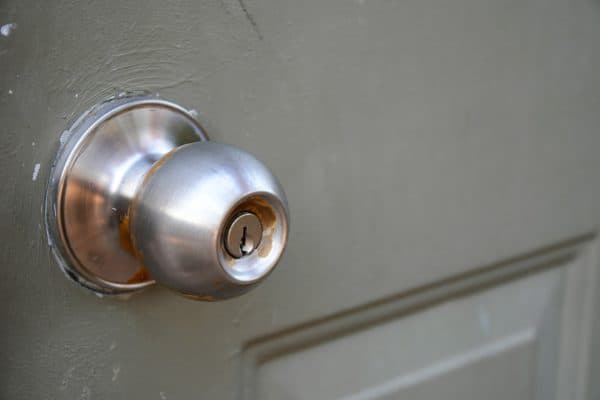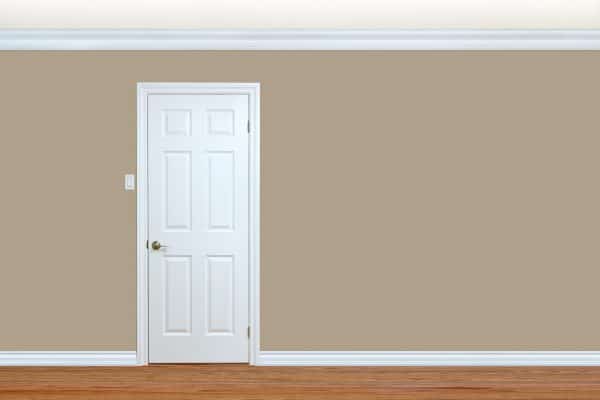Wooden doors are a great choice for your home, but one of the drawbacks is their ability to absorb moisture and how it affects the material. If you would like to install a wooden door and you're unsure if wetness would be a problem, we have consulted experts and this is what they have to say.
Wooden doors can get wet and their water repellency and drying time depend on the door's exterior finish. But wood can also absorb moisture and swell, especially if doors do not have protective finishing. Seasonal weather can affect a door's moisture level.
If you will like to know more about wooden doors, read up until the end. We also talked about tips to avoid moisture in wooden doors
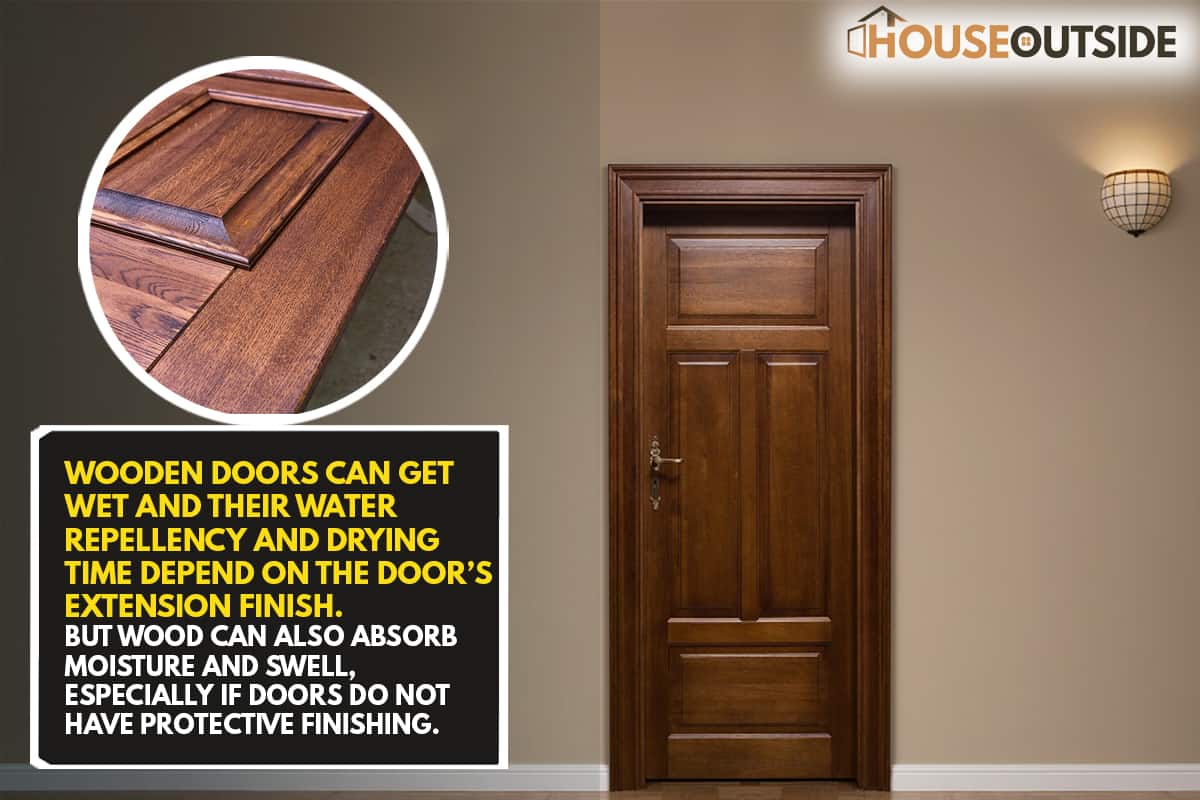
Can Wooden Doors Get Wet?
Wooden doors are good choices because of their aesthetic value, most of them are soundproof, energy efficient and fire retardant, there are many advantages to using wooden doors, just to mention a few.
One of the situations that give homeowners concern is moisture and how it affects home furnishings, especially wooden ones (e.g doors, and chairs). Since doors are a showpiece and the first contact with any external conditions, moisture should be of concern.
Wood can absorb moisture from the air, especially when humidity increases, this is because wood is hygroscopic, which means that it can act like a foam.
When humidity increases, wood absorbs the moisture and wells up, it will also shrink back when humidity reduces.
When wooden doors swell, you will notice that they would no longer fit into the frame properly, it then becomes difficult to open or close.
Tips To Avoid Moisture In Wooden Doors
Because wood has pores any contact with water will be detrimental to the longevity of that wood, and outside doors are more vulnerable, hence, it becomes safer to avoid moisture from getting into your wooden doors.
Here are some tips you can follow:
Apply Wood Sealers
Wood sealer solutions are applied on the wood surface to fill up the spaces and avoid water from getting into the wood.
Apply wood sealers all over the doors, and concentrate on the sides of the door, which can sometimes be neglected. If you had to cut your door to fit properly, remember to seal up those places too.
Many modern wooden doors now come with a fine finish. You can still apply sealers to it. There are many types of wood sealers; you can get one in your local store
This is a perfect prevention method for all wood types, but it is a better option for outside doors. Since other tips will not be as effective as using this method.
Check out LR liquid waterproof sealant on Amazon.
Use Dehumidifiers
If you noticed swelling and shrinking in your inside doors then you have fluctuations of humidity levels in your home. The best thing to do is get a dehumidifier.
It will absorb cold air, and stop the fluctuations of the humidity in your home. This in turn will save your doors from absorbing moisture.
Dehumidifiers come in different sizes and models, you can choose the one that best suits you.
Maintain Doors
As days go by, doors that were once new become old and the paints or polish begin to wash off. Maintenance can do a lot for these doors, you should apply sealers to them, or paint them.
Regular DIY maintenance on your doors can prevent them from absorbing moisture.
Other tips include:
- Open up windows when humidity is high inside but low outside
- Keep your firewood outside
- Keep wet clothes outside
- Use protective sealants on your exterior doors
Why Do Wooden Doors Swell During Rainy Season
The swelling of wooden doors is caused by imbibition. This is a diffusion process where what is absorbed by a material thereby increases the volume of the material without forming a solution.
When rain falls, air moisture content increases, since wood is porous, your wooden doors absorb this moisture even though they are not directly under the rain.
Exterior doors are the most vulnerable because they are in contact with the elements and little drops of water from rainfall can fall on them.
If your door is built with an allowance, a little space in between the door and the frame, then a swollen door will not be a nuisance at all.
How Do I Protect My Door From Rain?

The most effective way of protecting your door from rain is to install a protective overhang. The protective overhang can be aluminum sheets, plastic sheets, or a canopy. The idea is to redirect the water from rainfall to avoid it from touching your door.
You can also install a storm door, made from glass, aluminum, or plastic. This door does not only protect your wooden door but it offers insulation and ventilation. Storm doors are exterior doors, they are usually not made with a porous material, you can get one in a local building equipment store.
Will A Swollen Door Go Back To Normal
Having a swollen door can be unsafe and uncomfortable for you, hence there is a need to know if it will reduce back to normal or if it is going to be left that way.
Swollen doors can only reduce back to normal if it is a minor case of swelling, but anything major (swollen over a long period) can permanently disfigure the doors.
Understanding what makes a door swell up will help you know if you should do a total change of the door or if it is a minor problem.
Some of the things that make a swollen door include:
- bad weather conditions,
- old age or frequent usage,
- poor raw material quality,
- ill-door hinges,
- and misaligned frames.
Situations like age and poor raw material quality will need a total change, but others caused by misalignment of doors on frames or bad hinges can be fixed readily.
Some ways you can dry your swollen door are, for minor swelling: use a hand drier or a heat gun, you can sand the door, you can polish, paint or seal the door, or you can decide to change the door completely.
What Is The Most Waterproof Wood?

No doubt, wood is good material for furniture, but not all woods are resistant to water. Below are some woods which are waterproof to moist.
Teak Wood

It is a tropical wood native to southeast Asia, tropical Africa, and Latin America. The wood can withstand cracking from rainfall and sunshine. Teak wood is one of the best woods when it comes to water resistance.
Camaro Wood
Camaro wood is another tough wood that doesn't need treatment but can stand harsh weather fluctuations without cracking or swelling. This wood is very durable and it is suitable for exterior doors.
Iroko Wood

This is a very popular tropical wood, it is native to central and east Africa. It is known for its durability and its ability to resist water and insects.
Iroko wood is very pliable, it is fine and it guarantees a fine finishing. This wood is also good for exteriors or outdoors because of its properties.
Larch Wood
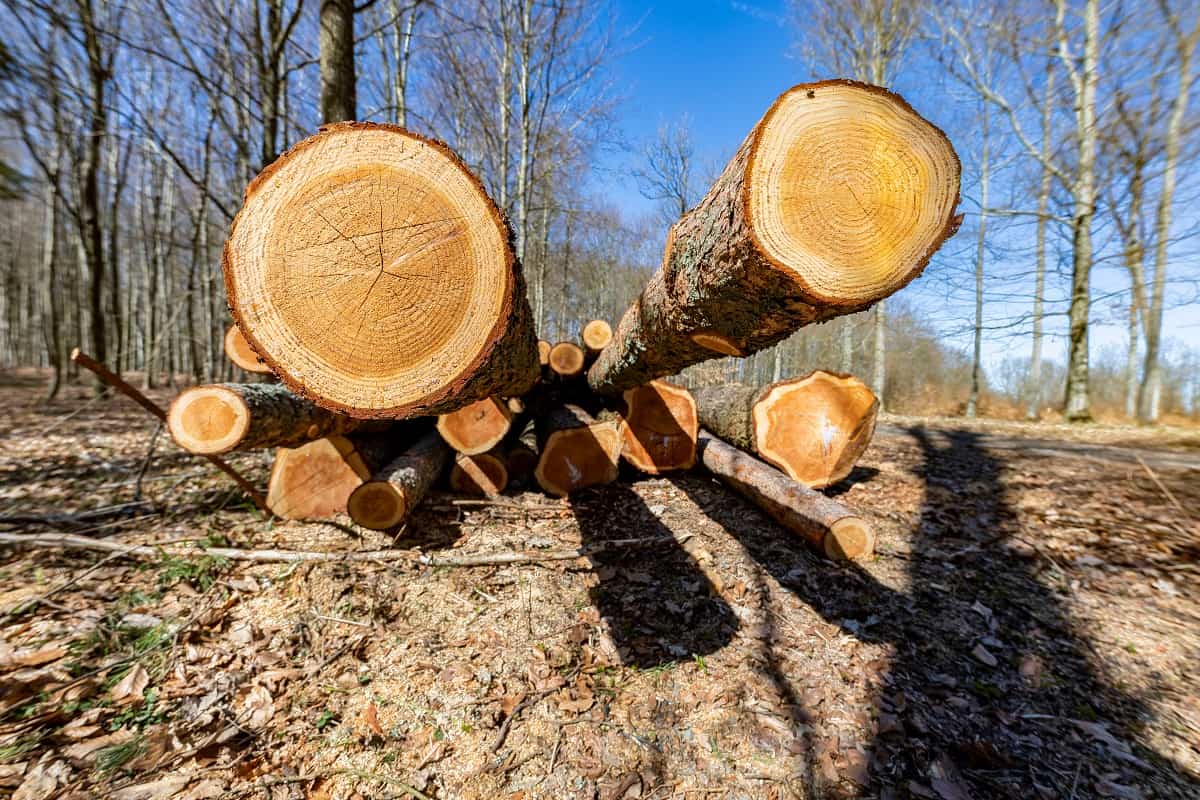
Larch wood is a strong wood resistant to harsh weather conditions. It has waterproof qualities which is why it is often used for the construction of boats and bridges.
Larch wood is perfect for both indoor and outdoor uses, it has a fine resin which makes it a choice for decorations.
Elmwood
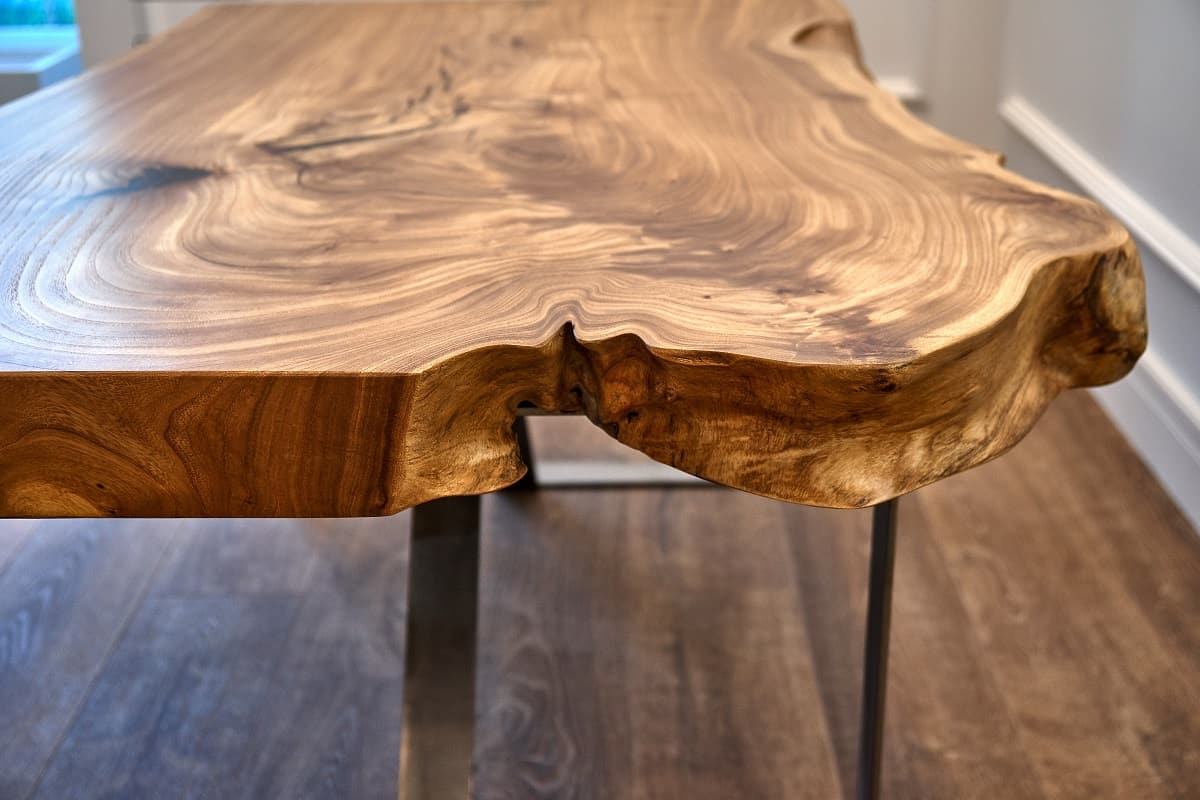
This is another strong wood, elm can be submerged in salt water for a long time without being destroyed.
This wood is used in the construction of ships. It is also a flexible wood with a fine color so it can be used for interior decoration.
Ipe Wood
Ipe wood is another water-resistant wood, it can be used for bridges, stairs, and roofing. This wood is versatile and easy to work with.
It has no smell and it is glossy, which makes it a good material for people who are sensitive to odors.
How Do You Fix A Swollen Wooden Door Frame?
Fixing a wooden door frame is easy, depending on the intensity of the damage. If it is a minor swelling, you should air dry the door. You can air dry by using your hairdryer, ceiling fan, or heat gun close to the surface of the wood to dry it up.
You can also decide to sand the door, make sure you read through the proper method to sand your door, to get optimal results.
Painting, polishing, or sealing can be an option, but if this doesn't work then you need a total replacement of the door.
Do Wooden Doors Expand In Winter?
During winter, the air moisture content becomes high. Your door is more likely to swell during winter. If you have good wood or proper door finishing you will not experience this swelling.
Conclusion
Wooden doors add aesthetic value to your home, but the type of wood, weather fluctuations, the door's location (interior or exterior), and the door's finish can influence moisture absorption on your wooden doors. Consider these factors when selecting wood type and maintaining your doors.
To learn more about wooden furniture, check out these engaging articles:


